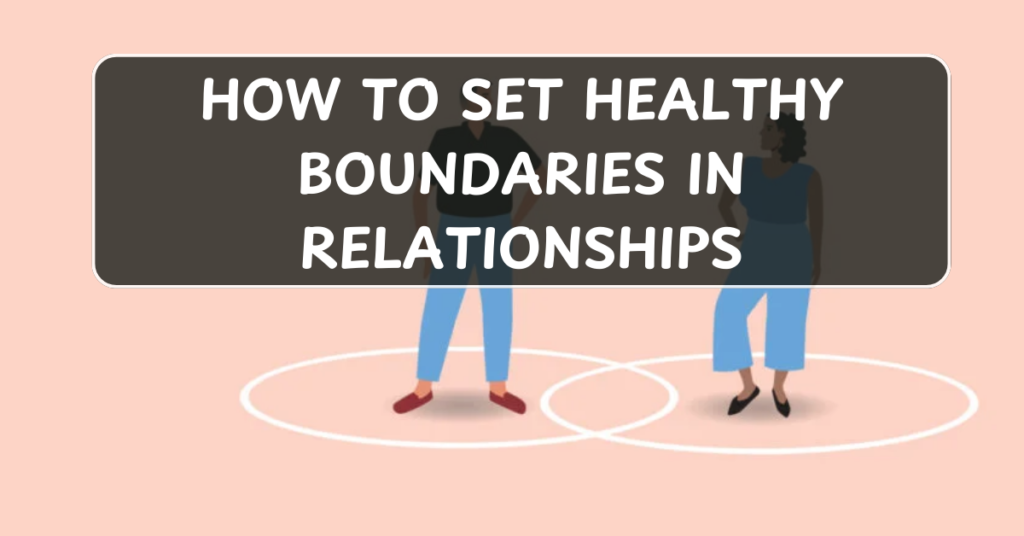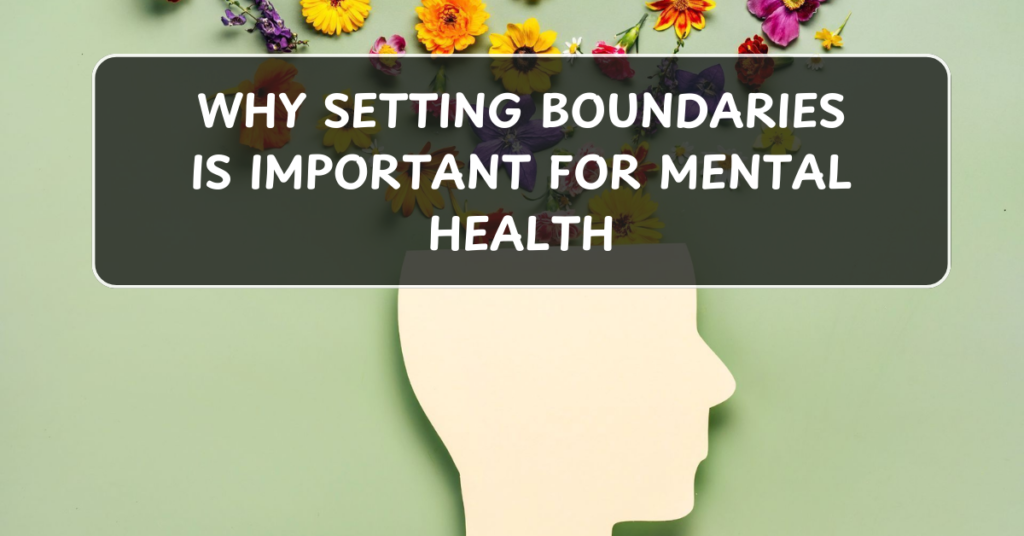
Healthy boundaries are essential for maintaining balanced and respectful relationships. They help to protect your emotional, physical, and mental well-being, ensuring that you don’t feel overwhelmed, taken advantage of, or drained by others. Establishing clear boundaries enables you to build trust, communicate effectively, and foster mutual respect. Here are some examples of healthy boundaries in different areas of life:
1. Emotional Boundaries
Emotional boundaries protect your feelings, needs, and emotional energy. They ensure you don’t take on other people’s emotions or allow others to manipulate your feelings.
- Example 1: Saying no to emotional manipulation, like if someone is trying to guilt you into doing something you’re uncomfortable with, you set a boundary by saying, “I understand that you’re upset, but I’m not responsible for fixing how you feel.”
- Example 2: Sharing your feelings with others in a respectful manner, such as, “I feel hurt when you speak to me like that, and I would appreciate it if you could communicate differently.”
- Example 3: Refusing to accept blame for others’ emotions or actions, like, “It’s not my fault you’re angry. I did my best, and I need to respect my own feelings.”
2. Physical Boundaries
Physical boundaries define your personal space and what level of physical touch you’re comfortable with. These boundaries help ensure that you feel safe in your own body.
- Example 1: Saying “no” to unwanted touch, like, “I’m not comfortable with hugs. Can we just shake hands instead?”
- Example 2: Asking for space when you need it, for example, “I need a few minutes alone to recharge. Can we talk later?”
- Example 3: Setting limits around physical proximity, like, “I prefer when people don’t stand too close to me when we’re talking.”
3. Time Boundaries
Time boundaries are about how you allocate and protect your time. This ensures that you’re not overburdened and can balance work, relationships, and self-care.
- Example 1: Setting work boundaries, such as, “I’m only available to talk about work during office hours, after that, I need to focus on my personal time.”
- Example 2: Saying no to social invitations when you’re feeling overwhelmed or need rest, like, “Thank you for the invite, but I need some downtime this weekend.”
- Example 3: Prioritizing personal time, such as, “I need to leave the event by 8 p.m. to ensure I get enough rest for the next day.”
4. Mental Boundaries
Mental boundaries protect your thoughts, beliefs, and opinions. They allow you to make decisions independently without being overly influenced by others.
- Example 1: Respecting each other’s opinions, even when you disagree, like, “I understand you see it differently, but I feel strongly about this perspective.”
- Example 2: Refusing to be pressured into making decisions or choices that don’t align with your values, for instance, “I don’t feel comfortable with this decision, and I need some time to think it through.”
- Example 3: Protecting your personal values, such as, “I appreciate your input, but I have a different viewpoint and will stick with my choice.”
5. Sexual Boundaries
Sexual boundaries ensure that all parties involved in a sexual relationship feel safe, respected, and comfortable.
- Example 1: Saying no to sexual activity when you’re not ready or don’t feel comfortable, like, “I’m not ready for that yet, and I need you to respect my feelings.”
- Example 2: Communicating your sexual preferences or dislikes, for example, “I don’t enjoy that, and I’d prefer if we could focus on something else.”
- Example 3: Asking for safe words or establishing guidelines for consensual sexual experiences, such as, “Let’s agree on a word to stop if either of us feels uncomfortable.”
6. Social Boundaries
Social boundaries define how much time and energy you’re willing to invest in relationships and social interactions.
- Example 1: Setting limits with friends or family who tend to demand too much of your attention, like, “I love spending time with you, but I can’t be available every day.”
- Example 2: Politely ending a conversation when it becomes too draining or negative, for instance, “I think this conversation isn’t productive right now, let’s talk later.”
- Example 3: Protecting your need for privacy, such as, “I prefer not to share details about my personal life, and I’d appreciate it if we could respect that.”
7. Financial Boundaries
Financial boundaries protect your resources and ensure you’re not taken advantage of in financial dealings.
- Example 1: Refusing to lend money when you’re not comfortable doing so, like, “I’m sorry, but I can’t lend you money right now.”
- Example 2: Setting limits on financial commitments, such as, “I can’t afford to contribute to this event right now, but I’ll help in other ways.”
- Example 3: Setting clear expectations about financial responsibilities in shared situations, like, “We’ll split the bill evenly, and I’ll pay my part.”
8. Digital Boundaries
Digital boundaries are important in today’s world where technology can blur the lines of personal space. These boundaries help you protect your privacy and avoid digital overload.
- Example 1: Limiting your availability via text, email, or social media, like, “I check emails only during work hours, and I’m off the grid after that.”
- Example 2: Setting clear guidelines for social media interactions, for instance, “I prefer to keep my personal life private, so I don’t share every detail online.”
- Example 3: Saying no to excessive digital contact, such as, “I don’t feel comfortable with constant texts, can we limit that to just the important things?”
9. Work Boundaries
Work boundaries help you protect your energy and maintain balance between work and personal life.
- Example 1: Not answering work emails or calls after hours, like, “I only check work emails during business hours.”
- Example 2: Setting limits on how much overtime you’re willing to do, such as, “I can’t stay late this week; I have personal plans.”
- Example 3: Ensuring that your role and responsibilities at work don’t encroach on your personal time, for instance, “I’m focused on my task today, so I’ll need help with this project tomorrow.”
10. Communication Boundaries
Communication boundaries involve the way you communicate and how you expect to be treated in conversations.
- Example 1: Asking for respect during a disagreement, like, “I need us to discuss this calmly. Yelling is not productive.”
- Example 2: Refusing to tolerate hurtful language, such as, “I won’t accept being spoken to like that.”
- Example 3: Limiting how much personal information you share, for example, “I’m not comfortable discussing that part of my life with you right now.”
Conclusion
Setting and maintaining healthy boundaries is a crucial skill for creating balanced and respectful relationships. Healthy boundaries help you protect your time, energy, and well-being while fostering trust and mutual respect with others. By clearly identifying your limits and communicating them effectively, you ensure that your relationships are nurturing and sustainable. Remember, boundaries are about self-respect, and they create the space for growth, understanding, and fulfilling connections.


